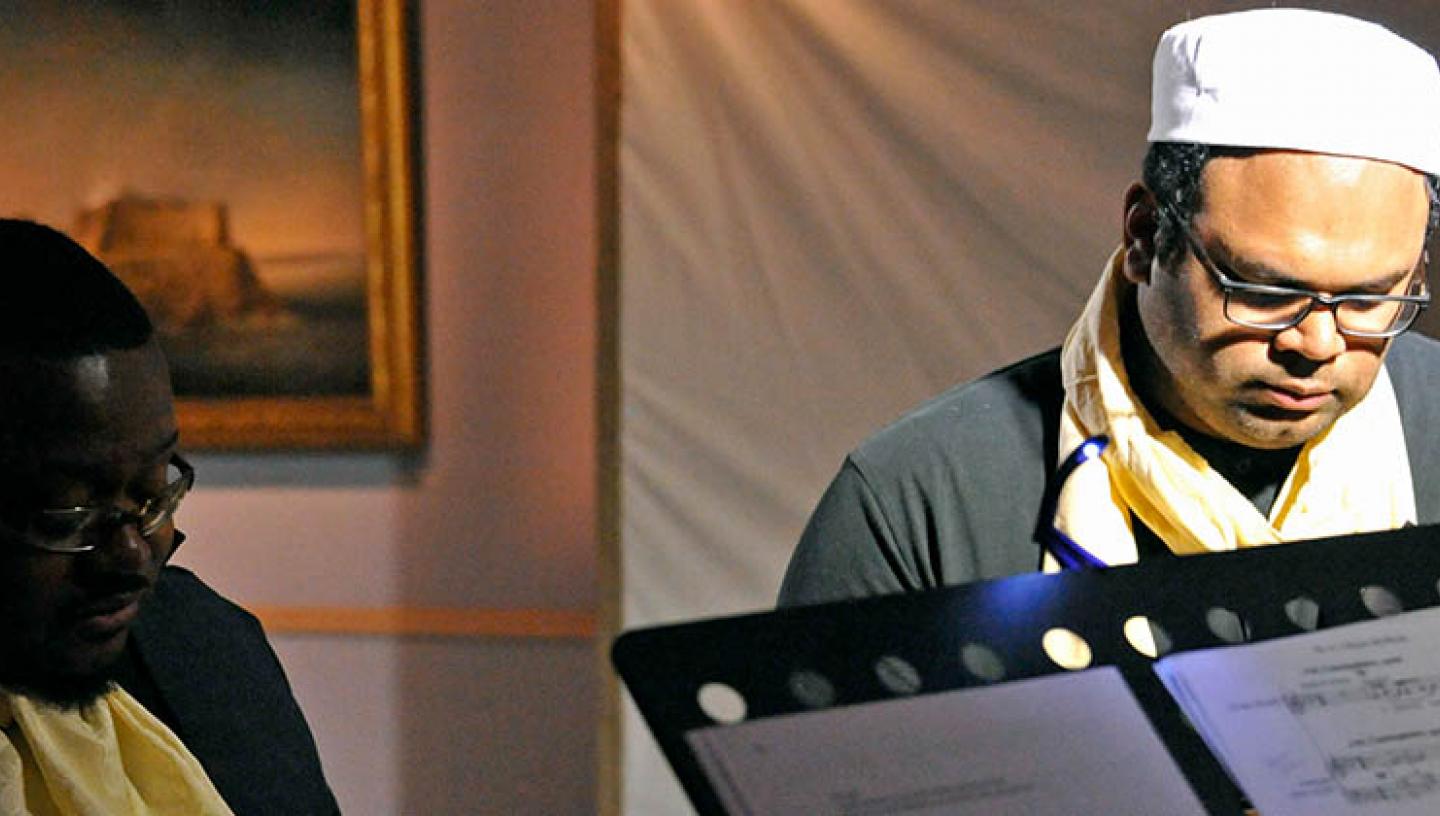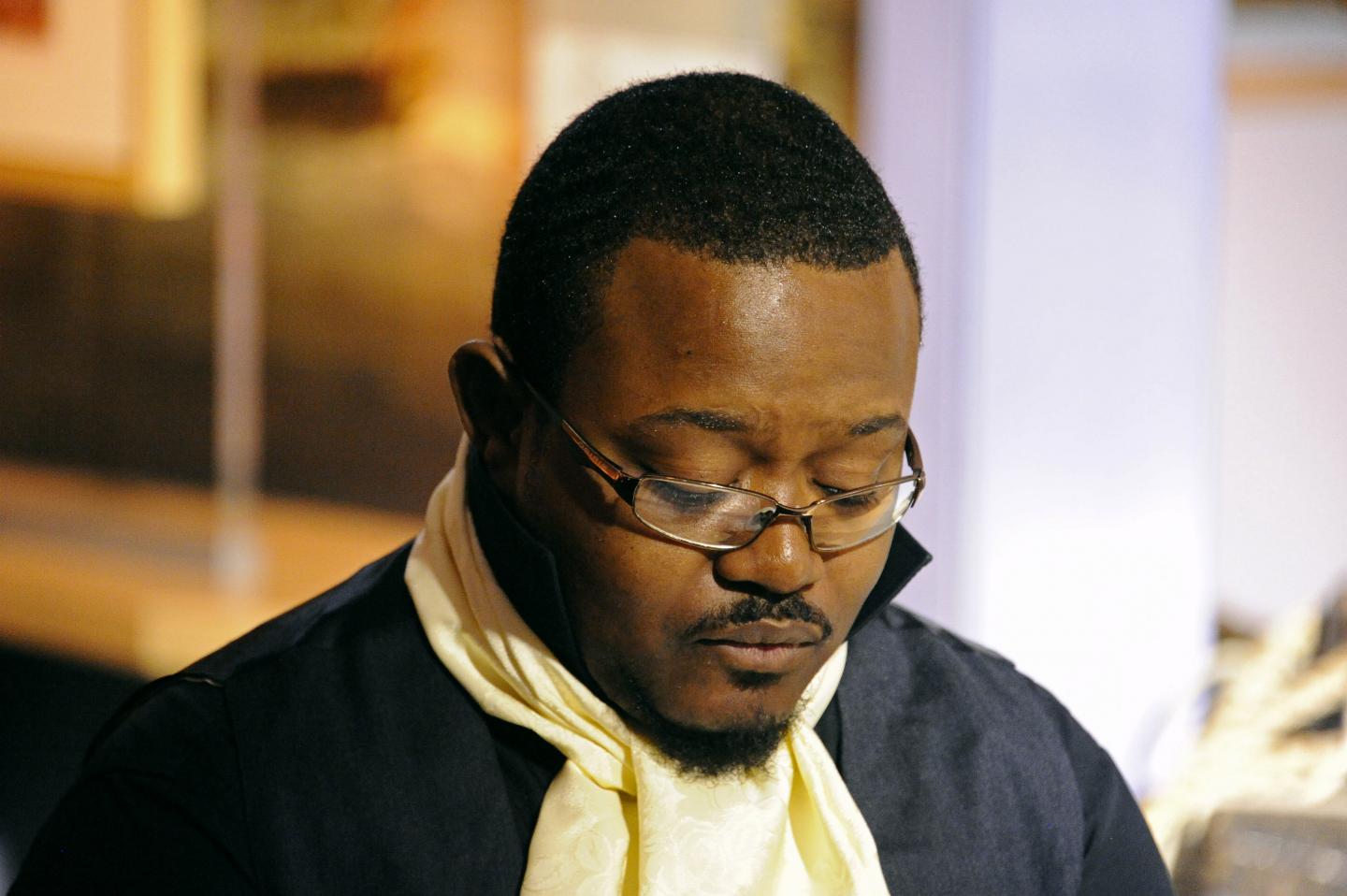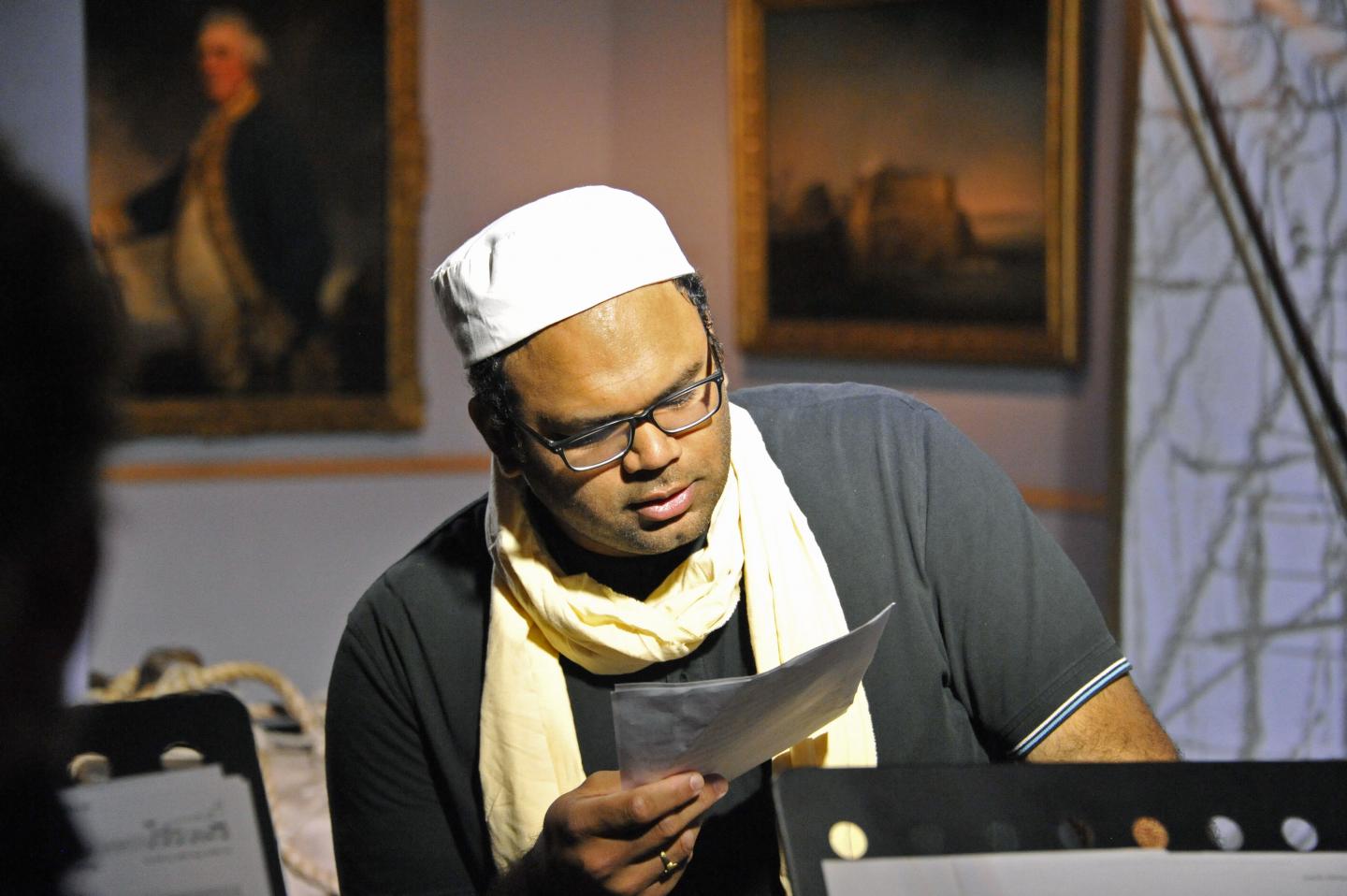
03 Aug 2017
Ahead of International Slavery Remembrance Day and Brolly Productions' The Powder Monkey, Maritime 1788 , composer Dominique Le Gendre, reflects on the opera's journey
Rehearsing our new opera The Powder Monkey in situ in the Atlantic Gallery of the National Maritime Museum a few weeks ago suddenly brought this story back to its home to speak to the exhibits that bear witness to the centuries of the trans-Atlantic slave trade. The story behind our opera found its shape right there in the archives of the National Maritime Museum.
Many elements would become vital influences in writing and conceiving the opera. Books such as 1759- The Year Britain Became Master of the World by Frank McLynn, The Interesting Narrative of the life of Olaudah Equinao or Gustavus Vass, The African by Olaudah Equiano, Texaco by Patrick Chamoiseau, Ayahs, Lascars and Princes by Rozina Visram, the painting by William Turner of The Slave–Ship and the contemporary response to this painting by Guyanese writer and poet David Dabydeen in his narrative poem 'Turner' are just a few of the many elements that have been absorbed and digested by our trio that make up the creative team behind the opera, Dominic Hingorani- writer and director, Rachana Jadhav- designer, illustrator and myself as composer.

The tricky part of writing an opera with such huge questions and themes as presented by the many references that inspired us was finding how to bind it all together. The answer became clear after a research visit to the National Maritime Museum in December of last year. We were given an exclusive and up-close tour of the log of a Slave ship. Each daily entry was announced on the page by a meticulously and beautifully painted banner depicting either ships at sea or very intricate fish. Underneath the banner was a detailed list of every item of the ship’s cargo and factual details on the condition of the cargo.
The juxtaposition of beauty on the same page as the details of human cargo listed as numbers underlined the banality and ordinariness of the events and items in the captain’s log. From this log, the characters of our opera emerged, each of them representing a very distinct world. The powder monkey is a young man of 16, born on the Slave-ship of a slave woman who was thrown overboard after childbirth and who is brought up by the captain, the lascar and the sailors of the ship. His mother is reincarnated as the figurehead of the ship who exists in his imagination but also as the spiritual conscience of the opera, asking questions of her son. The Lascar, a young muslim whose life has also been spent on the ship has trained the powder monkey and helped shape him.
Without any sentimentality, the opera simply presents these three characters as they interact with each other on the ship and each singing in a musical style that defines them and tells us about them. Many musical influences fed the opera especially traditional music of West Africa and North East England and Sufi devotional music. Scored for just two instruments, violin and keyboard and three voices, the opera seems at home here in the Atlantic Gallery, framed by the sails of the ship with Rachana’s projections that enrich Dominic’s libretto, imagining for us the audience, the life that our characters would have lived in 1788 on board a slave ship and whetting our appetite to know more.
Join us for International Slavery Remembrance Day
